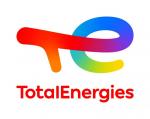Design and realization of a kinetic energy harvester in MEMS silicon technology with its conditioning circuit adapted to an active control
| ABG-121358 | Sujet de Thèse | |
| 21/03/2024 | Autre financement public |
- Sciences de l’ingénieur
- Electronique
- Physique
Description du sujet
Kinetic Energy Harvester (KEH) are modules that convert part of the work done by mechanical vibrations into electrical energy. They can be used to replace or complement batteries in IoT (Internet of Things) applications or wireless sensor network nodes. They are an alternative to photovoltaic cells or thermoelectric generators when the systems to be powered are small and when vibrations are naturally present in the environment of the targeted application. This converted energy can then power the electronic system of which the KEH is a part. The size of KEHs is typically from a few mm3 to a few cm3, and their moving mass from a few milligrams to a few grams.
A vibration energy harvester is composed of four blocks: a moving mass attached via a spring to the vibrating frame, an electromechanical transducer converting kinetic energy into electricity, a conditioning circuit biasing the transducer and a power management block interfacing with the electric load. In a conventional approach, the transducer exploits the vibrations of the moving mass caused by ambient vibrations to convert a maximum of energy to power the load.
However, this passive approach is not the most efficient. By controlling the movement of the moving mass according to the ambient vibrations, it is possible to convert much more energy, especially when the vibrations are non-harmonic and non-regular, as is the case in many applications (e.g., human body movements). The technique of active energy harvesting is called "near-limits". It is described in several recent fundamental works on energy recovery theory.
The objective of this PhD project is to design, model and realize the core of the vibratory energy recuperator containing the MEMS device and its conditioning circuit.
The work program is as follows:
- Assimilation of the theoretical principles of vibration energy harvesting and the "near-limits" technique
- Design, test, fabrication, and validation of the MEMS device for the “near-limits” energy harvesting
- Design, modeling, and realization of the adiabatic conditioning circuit for the designed and manufactured MEMS transducer.
- Measurement campaign to characterize the MEMS device and the joint operation of the device and the conditioning circuit.
The thesis program includes an important part of experimental activity: electronic prototyping using off-the-shelf components, characterization of MEMS devices, testing and characterization of the whole MEMS system.
Prise de fonction :
Nature du financement
Précisions sur le financement
Présentation établissement et labo d'accueil
The laboratory benefits from its very favorable location for exchanges with academic laboratories and with the R&D of the local industrial cluster. It brings together the former teams of the IEF and the LPN and gathers critical forces on key lines of research. It meets two principal and inseparable objectives:
- To establish a flagship laboratory for research in nanoscience and nanotechnology
- To provide a large technology facility to the Plateau de Saclay and the Ile-de-France region, open to all academic and industrial players in the field, especially those from the Paris region
Intitulé du doctorat
Pays d'obtention du doctorat
Etablissement délivrant le doctorat
Profil du candidat
We are looking for a candidate with a background in one of the following disciplines:
- Electronics, microelectronics, electrical engineering
- Sensors and microtechnologies
- Physics
The candidate must have a strong interest in electronics and a strong motivation to develop multidisciplinary skills in the field of vibration energy harvesting.
Vous avez déjà un compte ?
Nouvel utilisateur ?
Vous souhaitez recevoir nos infolettres ?
-
EmploiCDIRef. ABG123678LVMH / GaïaParis - Ile-de-France - France

Ingénieur Recherche Nouvelles Matières Maroquinières (H/F)
MatériauxJunior -
EmploiCDIRef. ABG123652HermèsLimoges - Nouvelle Aquitaine - France

CDI – Ingénieur Développement Technique – Responsable d’une Plateforme de Projets R&D – CATE (H/F)
Matériaux - Génie des procédésNiveau d'expérience indifférent -
EmploiCDIRef. ABG123470Association Bernard Gregory (ABG)PARIS 3ème - Ile-de-France - France

Créateur et animateur de formations [f/h]
IndifférentNiveau d'expérience indifférent














